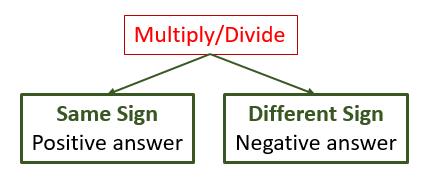
PUMPA - SMART LEARNING
எங்கள் ஆசிரியர்களுடன் 1-ஆன்-1 ஆலோசனை நேரத்தைப் பெறுங்கள். டாப்பர் ஆவதற்கு நாங்கள் பயிற்சி அளிப்போம்
Book Free DemoWhile multiplying 2 integers, depending upon the sign of the two or more than two numbers, the answer can change.
1. Any one number has a negative sign:
In multiplication operation, if any one of the numbers is negative, then the result will have a negative sign (+ve) × (-ve) = -ve.
Example:
1.
2.
3.
2. Both numbers have a negative sign:
In multiplication operation, when both the numbers are negative, then the result will have a positive sign (-ve)×(-ve) = +ve. This is according to the great mathematician Euler who proved, (-1)×(-1)=+1.
Example:
1. (-9) × (-10) = 90
2. (-12) × (-6) = 72
3. (-10) × (-10) = 100
4. (-5) × (-5) = 25
3. Both numbers have positive sign:
In multiplication, when both the numbers are positive, the result will be a positive sign (+ve) × (+ve) =+ve
Example:
1. 12 × 10 = 120
2. 10 × 6 = 60
3. 10 × 5 = 50
4. 8 × 6 = 48

Multiplication with zero:
Any integer × 0 = 0. Irrespective of nature and sign of integer, when an integer is multiplied by zero, the result is 0.
Example:
1. 40 × 0 = 0
2. −682 × 0 = 0